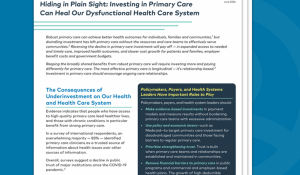You are looking at an archived version of our site. Please visit thepcc.org for a fresh, new experience!
You are here: Array » Health insurance premi ...
Health insurance premiums moderate — even decline — after years of steep increases
After years of steadily rising rates for employee health coverage, small employers may finally get a little relief this year and next from the steep increases of the past.
Blue Cross Blue Shield of Michigan, Priority Health and others propose to trim premiums for health policies that renew in the third and fourth quarters of 2015 or on Jan. 1, 2016.
Despite some lingering rate volatility, the reductions — albeit small — follow a period of moderating premium increases the last few years. In the latter half of 2015 and into 2016, the trend will shift for both insurers to statewide rate decreases, on average, for some small employers. However, there’s no guarantee reductions will continue over the long term.
For now, at least, health plans attribute their proposed decreases to several factors. Among them is a lower-than-expected medical claims trend from when they first filed 2015-16 rates with state regulators several months ago for small employers with 50 or fewer full-time equivalent employees.
“We just keep seeing better and better claims history in that population. It’s improved each year,” said Scott Norman, vice president of sales and client services at the Grand Rapids-based Priority Health.
In a recent rate filing to state regulators, Priority Health cites “somewhat better than expected” claims experience for seeking approval to implement a “small rate decrease” averaging 2 percent for policies renewing in the latter half of 2015, according to an actuarial memo filed with the rate request.
Priority Health then proposed to drop rates by a statewide average of 2.1 percent for 2016 for its small group HMO and point-of-service plans, according to its rate filing.
An April article in the industry publication Health Affairs highlighted a study on Blue Cross Blue Shield’s patient-centered medical home initiative that’s credited with avoiding $50 million in costs in 2013 through improved care coordination and management.
Blue Cross Blue Shield also reports that its patient-centered medical home initiative that involved 1,420 physician practices and more than 4,000 doctors generated $155 million in cost savings over a three-year period from 2011 to 2013 because of the ER visits and hospital stays that were avoided.
Recent News
Agosto 16, 2024
Agosto 12, 2024
Luglio 16, 2024
Giugno 24, 2024
Statement from @AnnGreiner1: "Today’s new @CMSinnovates announcement is a promising step forward for #primarycare p… https://t.co/A6l5Rt9Fzb —
2 anni 6 mesi fa
RT @LarryMcNeely1: @brookslasure says #primarycare relationship is foundation of care...announcing the "Making Care Primary" model from @C… —
2 anni 6 mesi fa
RT @LarryMcNeely1: stressing alignment w Medicaid. 8 States participating including CO, NM, MA. —
2 anni 6 mesi fa
Menu secondario
Copyright © 2024 Primary Care Collaborative



